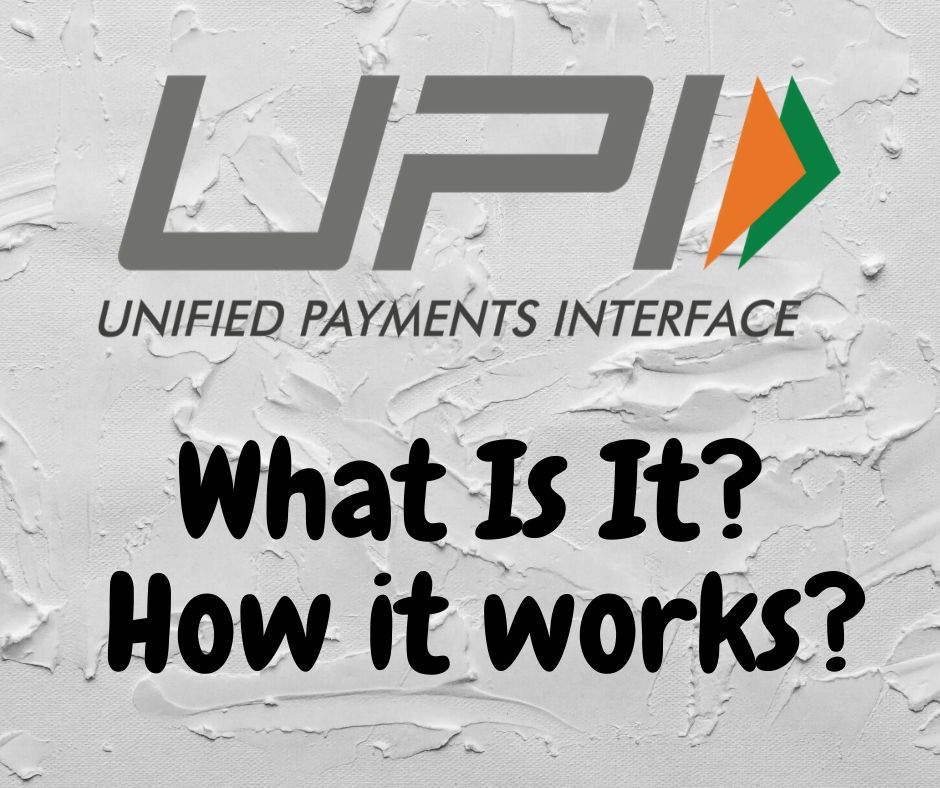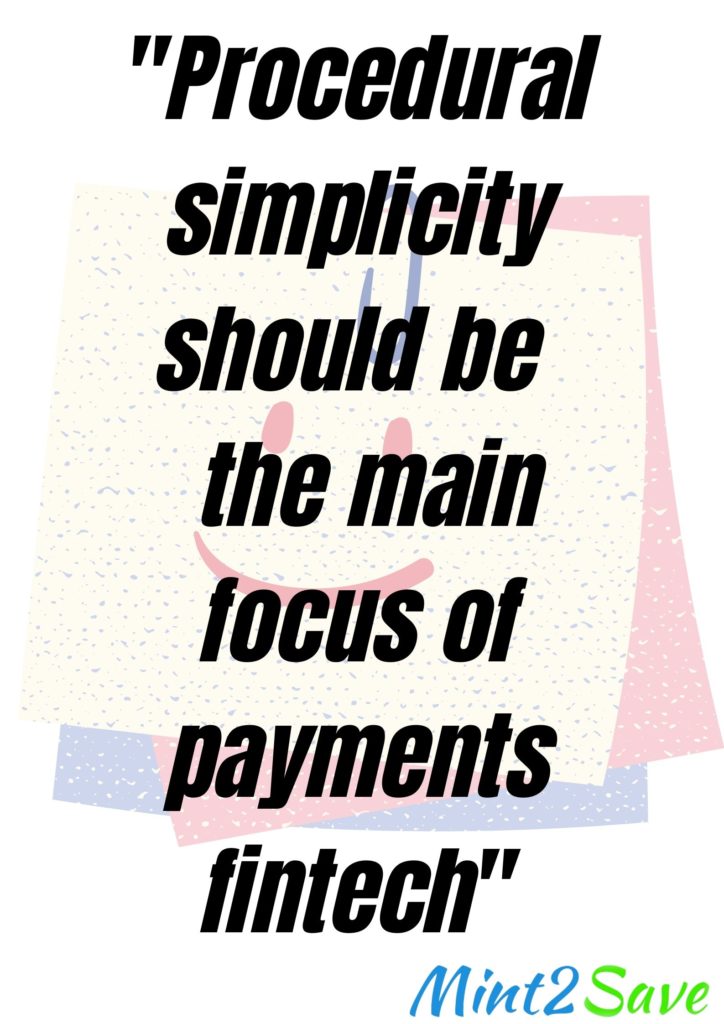Unified Payments Interface (UPI)- What Is It? | How it works?
- 3 July 2020 | 1231 Views | By Mint2Save

India has moved nearer towards becoming a cashless economy with the new innovation of technology in the banking sector known as Unified Payments Interface (UPI). With this new installment strategy, your cell phones will work as virtual charge cards and you’ll have the option to send or get cash in a split second. With the help of the QR code, you can skip the wallet system.
The Unified Payment Interface (UPI) has a unique ID similar to using an email ID for the transfer of money. It works as a kind of identifier that your bank uses to transfer your money to the bank. It is also used to make installments utilizing the IMPS, a service related to banking. IMPS is quicker than NEFT and helps in transferring the money quickly which is not at all like NEFT, rather it works 24×7. This implies that online payments will turn out to be a lot simpler without using any card.
UPI is a new banking technology by the National Payments Corporation of India’s (NPCI), which has partnered with the Reserve Bank of India and the Indian Banks Association (IBA). The NCPI works with the Rupay foundation which is similar to Visa and MasterCard that allows banks to interconnect with others.
Since the time it started working in Jan 2016, there are many people who don’t know about What is UPI, How UPI works, How might it change the manner in which I handle installments in business, and so forth. Here’s a deep guide on UPI payments.
What is UPI and how do you use it?
The Unified Payment Interface (UPI) builds a payment system that is straightforwardly connected to accomplishing the objectives of all-inclusive electronic installments, cashless society, and budgetary consideration, utilizing the most recent innovation patterns, set down in the Reserve Bank of India (RBI) Payment System Vision Document (2012-15).
The RBI report uncovers that the quantity of transactions for not using cash per individual right now remains very low. Just a small amount of the 10 million people or more retailers in India acknowledge card installments; banking administrations were accessible in under 100,000 towns, and about 145 million family units are excluded from doing banking.
Given this foundation, the National Payments Corp. of India (NPCI), which was set up in April 2009 with the center target of uniting and incorporating the various frameworks with shifting help levels, into an across the nation, uniform and standard business process for all retail installment frameworks, embraced the errand of executing a UPI to streamline and give a solitary interface overall frameworks.
How does UPI payment work?
UPI, since its launch, has simplified the process of money transfer. With this new payment system, you don’t need to recollect the beneficiary’s account number, account type, IFSC, and bank name.
How do I activate my UPI?
You can make a new UPI ID with just your Aadhaar number, cell phone number enlisted with the bank account and you are ready to go. You can set up UPI ID on one of the applications that help UPI administration. For the most part, a UPI ID starts with your personal mobile number followed by ‘@’ symbol and finishes with the bank you are associated with it. For instance, if your portable number is 93xxxxxx63 and in the event that you are utilizing the Paytm application, the UPI ID can be ’93xxxxxx63@paytm’.
Is UPI and Bhim the Same?
While UPI is a term for a payment interface, BHIM is an application, developed by NPCI to facilitate payments.
You can set the ID using BHIM app or any other well-known app. Once you give your details the bank will send you an OTP on the given phone number to ensure that you are the same person. When you enter the OTP, make a PIN that you will remember for a long time and no one should get known. Once you made the UPI ID’s pin, you can make payment to any person. Or you can also ask another person to pay you via UPI ID.
UPI utilizes existing frameworks, for example, Immediate Payment Service (IMPS) and Aadhaar Enabled Payment System (AEPS), to guarantee consistent settlement across accounts. It encourages push (pay) and pull (get) exchanges and even works for over-the-counter or standardized tag installments, just as for various repeating installments, for example, service charges, school expenses, and different memberships.
When a solitary identifier is set up, it allows mobile payments to be conveyed without the utilization of credit or check cards, net banking, and also there is no need to enter the account details. This would guarantee more prominent security of delicate data, however, associate individuals who have financial balances by means of cell phones to do bother free exchanges. By and large, UPI suggests fewer money exchanges and possibly diminishes the unbanked populace.
Features of UPI-
- Dependability – Since UPI is propelled by NPCI, one of the major benefits of this is reliability while doing payments. While using UPI, users have far more trust over moving their money and don’t need to stress over them getting lost their funds.
- Real-time transfer: Another crucial component related to UPI is the way how all the money transfer happens in no time and gives real-time information about the transactions. Whenever users want to send money, just enter the amount and press the send button and their recipients get the installments very quickly. Accordingly, fundamental day by day expenses, for example, purchasing staple goods, taking an auto or taxi home from work, paying your friend’s money back.
- Inclusivity: UPI is not fully dependent on the internet. UPI offers the choice to direct exchanges without a cell phone or working internet.

- No base transfer limit: UPI doesn’t have a base exchange limit. You can transfer money as low as Rs. 1. You can check before sending a large amount of money.
- Catch and hold facility: Merchants who get their money through UPI have certain benefits. One of them includes, you will have the option to block certain sums of money on their user’s cards.
- Sending invoices: UPI 2.0 has an updated version that supports invoices, which implies that organizations can utilize one platform for sending invoices and also for getting money.
How safe is UPI?
In the modern world, cell phones are in effect progressively utilized for identification on different stages like banking, charging, and web-based business.
UPI takes the benefit of this and links it with your portable number for recognizable proof. At the point when there is a need for you to sign up for a UPI app, your telephone sends a push SMS for confirmation purposes. This is important and assures that no one can take your OTP. Utilizing push SMSes helps your device to get connected with your phone number and should be changed each time you change your device.
UPI includes an additional layer of security by expecting you to make a PIN for your money transfers. To make a PIN, you’ll have to include your card information and check an OTP sent by your bank to your listed number. Each exchange needs you to enter your PIN for approval. Physical access to your mobile won’t be sufficient to make an exchange. This essentially implies that regardless of whether mobile is stolen or not, your PIN will, in any case, be expected to make a transfer, and money in your account remains safe.
Along these lines, in any case, which mode of transfer you use, the exchange must be finished with your cell phone that was enlisted by confirming your mobile number through SMS, and your PIN.
Thus, UPI is a great advantage to the Indian people who face difficulties in doing business. UPI will be a boon for many people as this will ease the bank’s procedure thus more customers will be attracted. Also, it is secure and fast and saves more time than going to a bank. Thus, the future of money transfer is through UPI only. Learn about the International Approach of BHIM UPI App.









